In September 2018, we received a surprise via email. A teacher from a school in Belgium wrote to us expressing interest to collaborate on a virtual exchange program for students. This sounded exciting. Soon after, the teacher from Institut Notre-Dame, Arlon, (INDA) and a teacher from Sharon School, Mulund, talked and chalked out a plan for the exchange which would enable students from both schools to exchange news, information and opinion on a range of things from their respective countries. The aim of the exchange program was to give both sets of students opportunities to not only learn about a new culture but also to give them opportunities to use English purposefully and meaningfully for communication. This seemed like a wonderful opportunity for our students at Sharon as they could interact with international students, understand more about their country and at the same time do some more detailed research about their own country and present interesting perspectives to the Belgians.
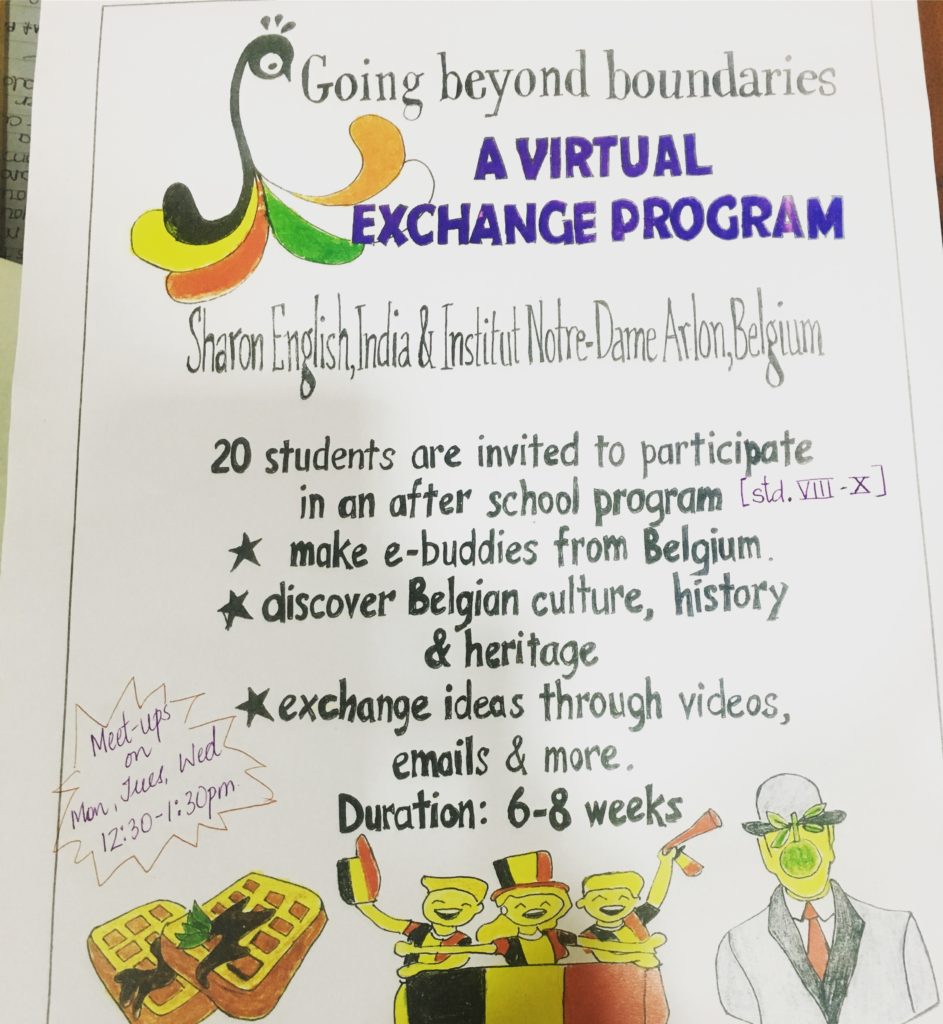
A bunch of ten students joined the program from Sharon which was run as an after-school session three days a week. INDA students, on the other hand, did the exchange program as part of their classroom instruction time with their teacher who taught English as a foreign language. Our students were excited to explore more about Belgium and were eager to know what a virtual exchange program really entailed. For the first session, we sat down and talked about our expectations.
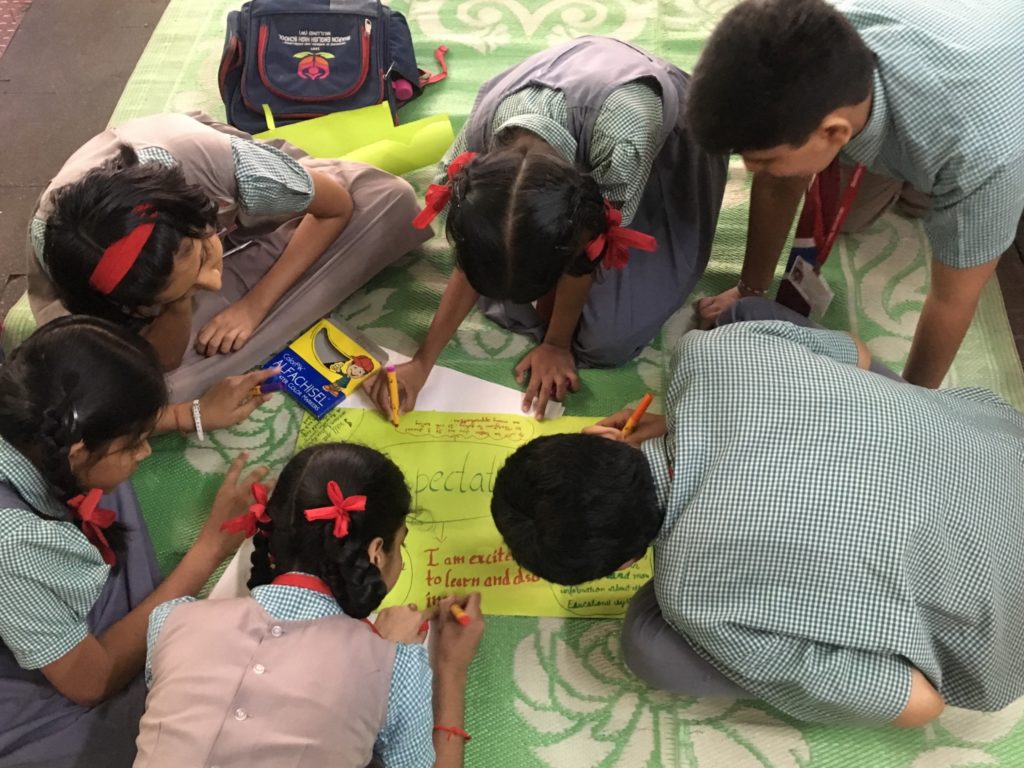
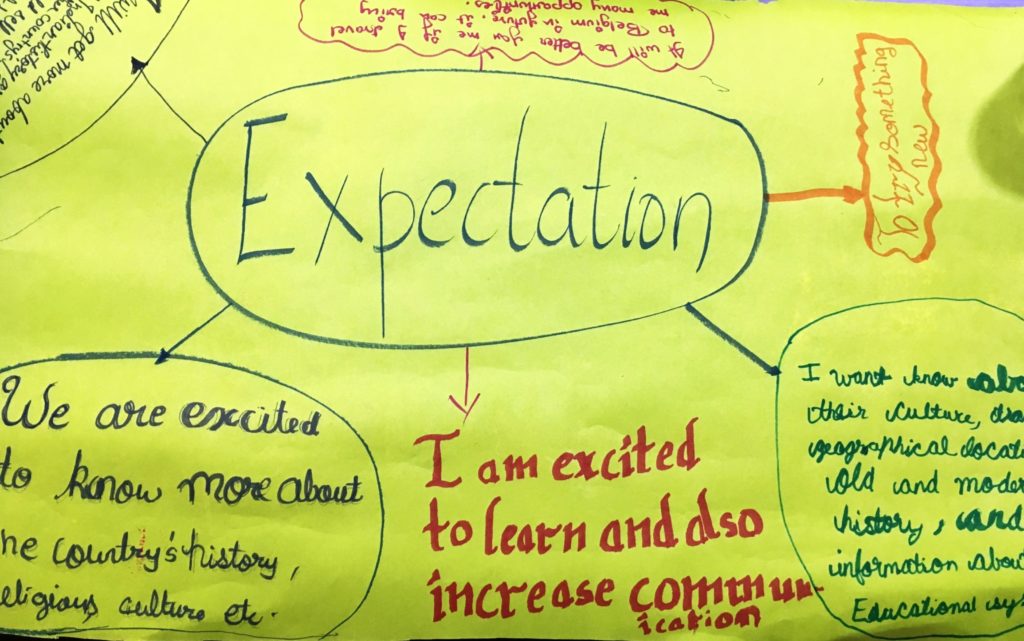
We had also received a quiz on Belgium from the students at INDA. We were pleasantly surprised to note that we did know a few things about Belgium! For example, we knew Belgium was famous for chocolates and waffles, we knew its neighbouring countries and we knew it was a part of the European Union. However, we didn’t know many things like famous painters, monuments and even the most practised religion in Belgium! We emailed our responses to what little we knew and waited for them to revert.
Similarly, we created a quiz on India for the Belgian students and emailed it to them. Here are some questions that Sharonites posed to their Belgian counterparts:
- What do the colours of the Indian flag represent?
- Which is the financial capital of India?
- India does not have a national language. But it has two official languages. Can you name them?
- Who was the monument, The Gateway of India built for?
- Name any two billionaires from India.
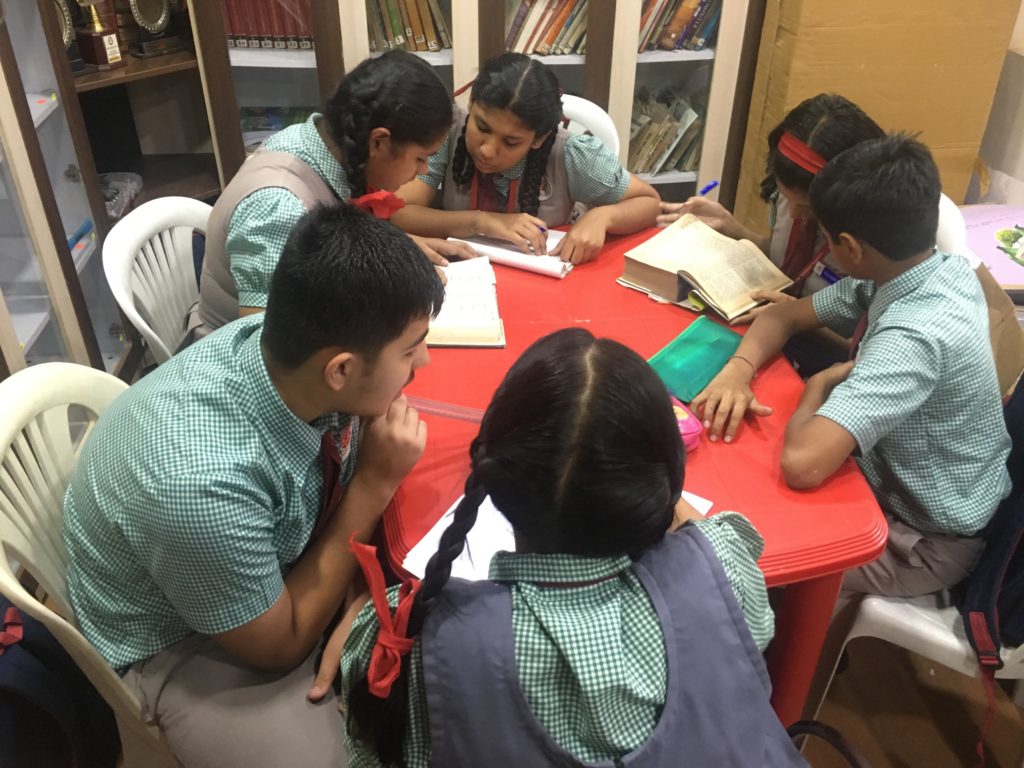
There were a few delays in communication because of holiday schedules in both countries. When we finally got back, we had exchanged the results of the quiz on Belgium and India and decided to move on to the next task which was to exchange some important national or cultural symbols. We discussed and got down to work in pairs. We drew, scanned and uploaded a few symbols on email. Along with these students also recorded a short video clip where they explained the significance of the symbol. The students from INDA were thrilled to be able to see and hear the Indian students and though they never really talked to each other the teachers were happy to facilitate this.
While we worked on our symbols, the students at INDA were busy making for us informative presentations on Belgian history, politics, culture and climate. There was a lot that we learnt about Belgium through this exchange of ideas. As a gesture of goodwill and appreciation, the Sharonites wrote letters thanking them for the presentations and commenting on how different things are in Belgium and India.

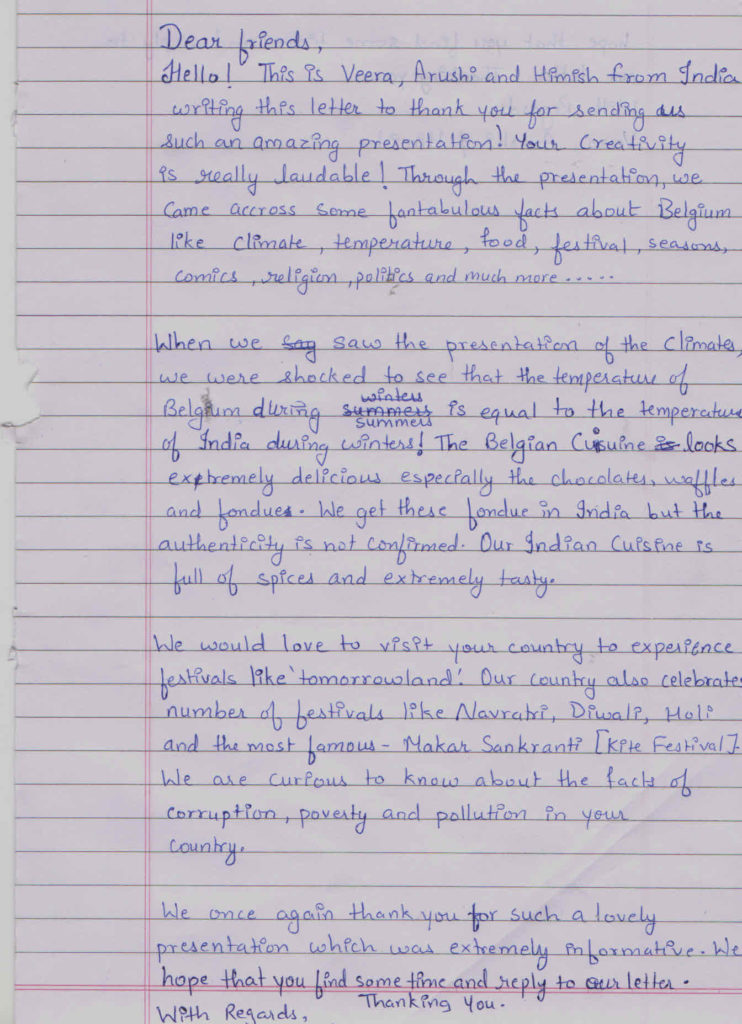
Finally, our students too worked on presentations which we shared with them.
Unfortunately, due to our schedules and time difference, we weren’t able to connect the two sets of students over a video or voice call or enable a one to one exchange over email. There are some things we learnt from this exchange which we would like to carry forward and improve in the next round, if possible. We’d like to be more organized and meet more regularly at our school since it is run as an after-school program. We would like to read more about Belgium, read storybooks from Belgium and explore art from Belgium. What was different about this program was that it was largely student-led, with the teacher being available to guide them and help them make decisions. As a teacher, it was wonderful for me to see how students took charge of their own learning, worked on their tasks collaboratively and with great enthusiasm and very little coaxing on my part.
This exchange happened to us almost serendipitously and to a large extent only thanks to the world wide web. We’re grateful for these opportunities and hope we can nurture another year of collaboration with INDA, Belgium in 2019 – ‘20.
Jennifer Thomas

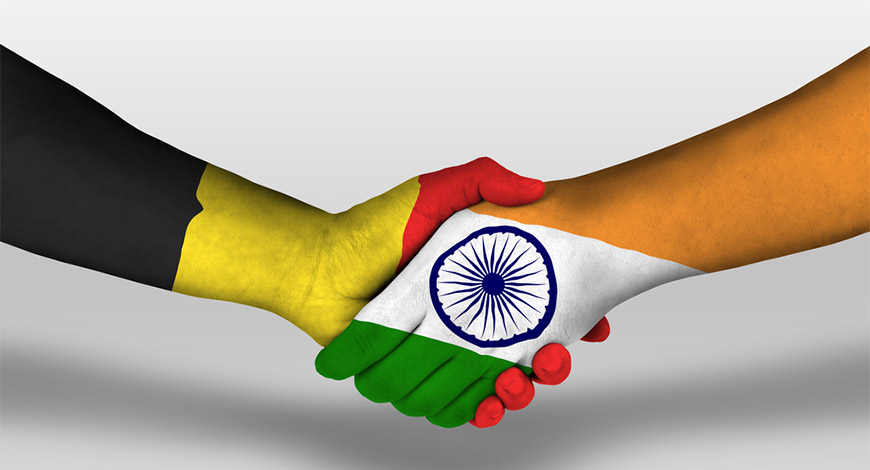
This is a wonderful documentation of efforts made. The process is as exciting as the outcome itself.
If time is a constraint and it often is, perhaps there could be asynchronous video chats shared? I am sure you may have already come across this but UNESCO has a web portal for just such classroom exchanges. http://www.unesco.org/education/lwf/doc/portfolio/case5.htm
It was a great experience for our students to take part in this virtual exchange and very motivating. We are looking forward to continuing our project next year!
Brigitte Anselme